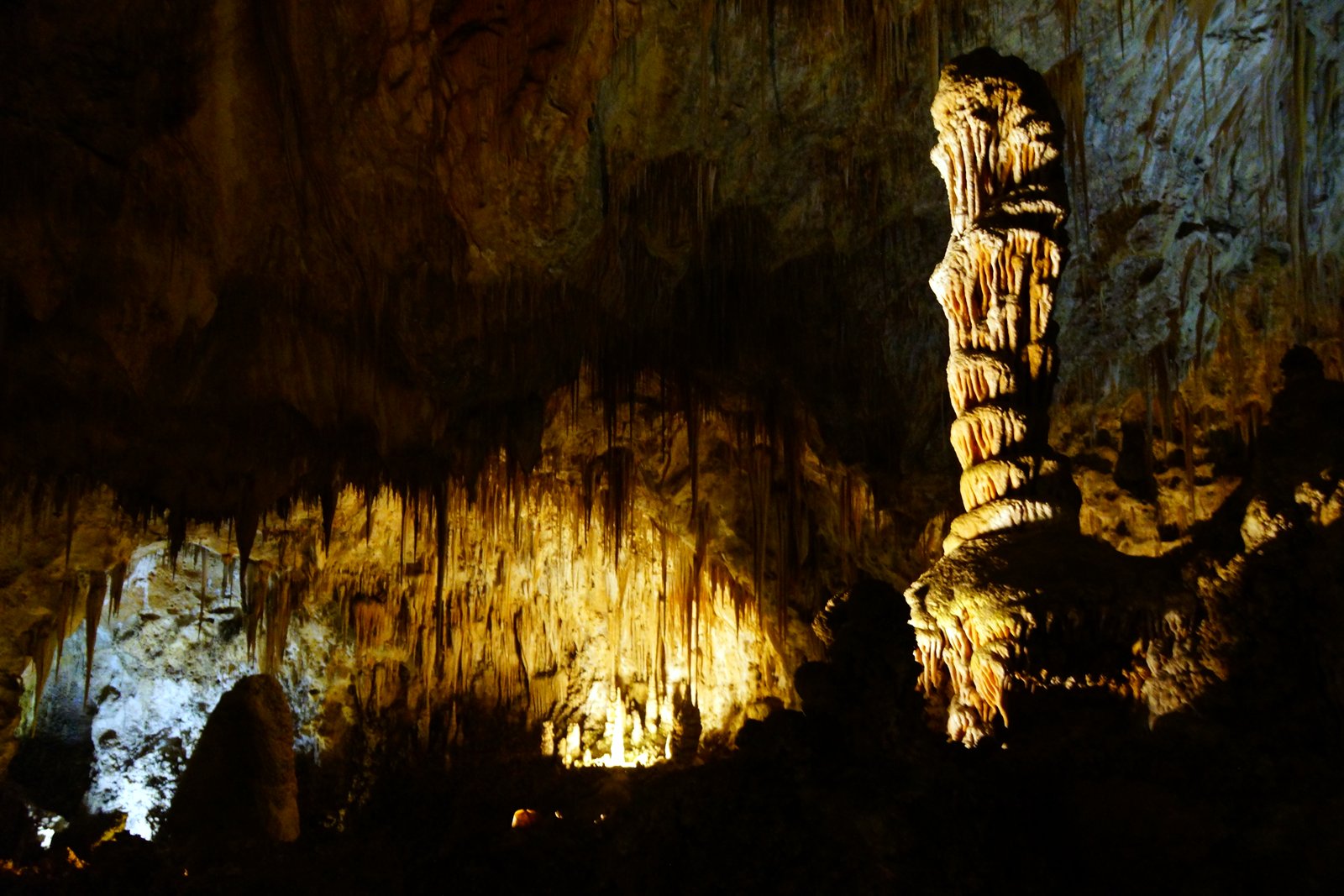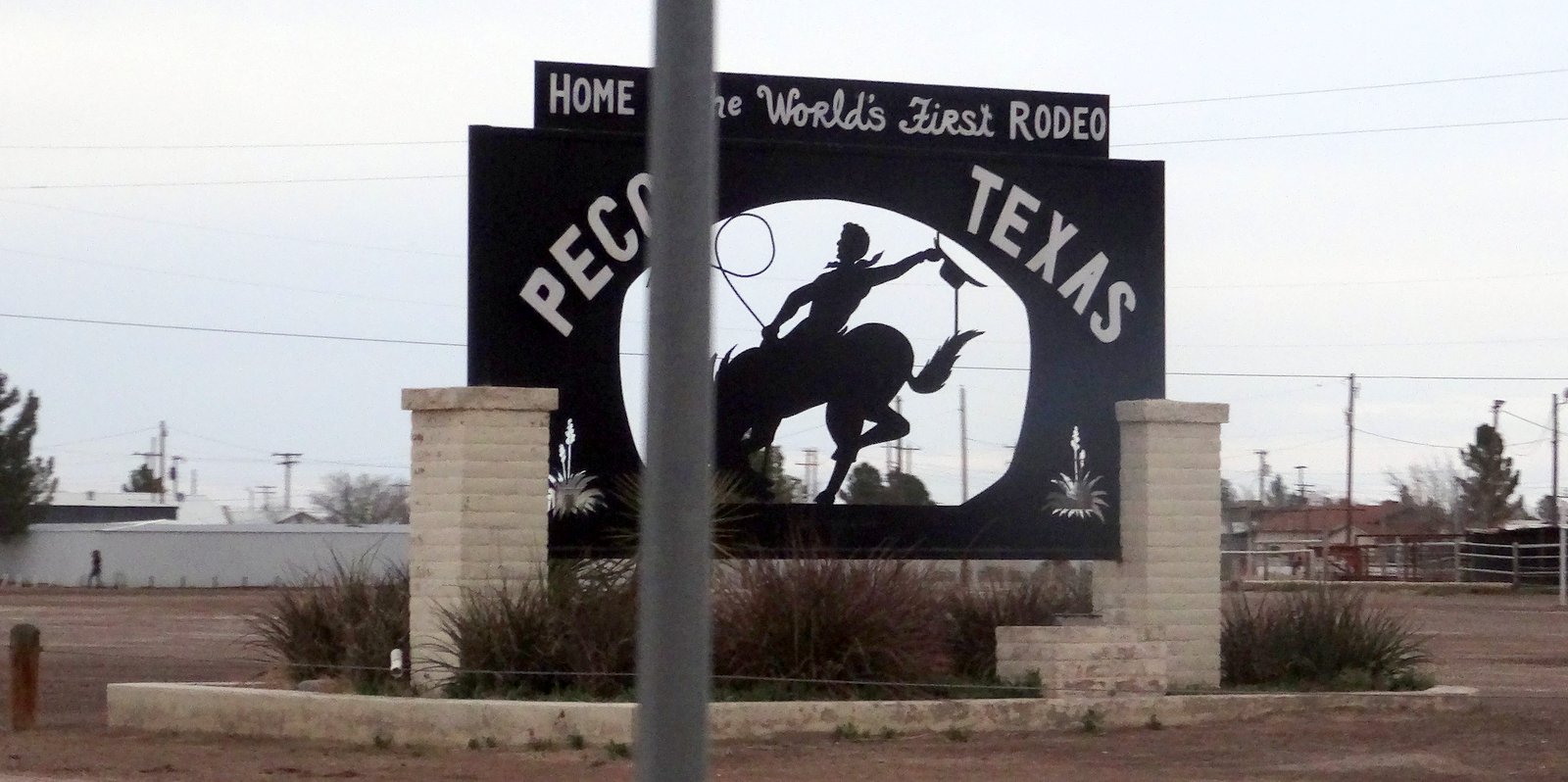Joani had tickets for a Carlsbad Caverns-King's Palace tour at 10:30 (we were supposed to be there 15 minutes early) and we thought we had plenty of time leaving the coach by 8:00. The trip took longer than I had thought, because of traffic and narrow, winding roads. When we hit the New Mexico border, the sign reminded me we crossed back into Mountain time magically giving us a one hour reprieve.
Only 95 miles from our RV park, but Hwy 285 was a busy road in the morning leading to lots of oilfields. Gaining an hour was a welcome gift.
We were so early we had the place to ourselves for a little while.
It's difficult to convey just how big this cave is.
The size of the Big Room was enormous,...
...and finally, some people to help give it scale.
My flash caught the multitude of drips falling.
Crystal Spring Dome
The base of Crystal Spring Dome drips into a shallow pool.
This and many other giants are dry as a bone and no longer growing.
I hate to be negative, but the tour was much less than optimal for us. There were 55 people on the tour - far too many for all of us to hear what Ranger Anna had to say. It also seemed rushed with very little time for pictures and you know we are all about the pictures! I think next time we will skip the tour and stick to the self-guided portions of the cave.
A large crowd gathering for the King's Palace Tour.
David noticed right away something was amiss. Ranger Anna confirmed, the stalactites were no longer vertical because the whole chunk had fallen from the ceiling millions of years ago.
We were introduced to helectites in the Timpanogos Cave near Salt Lake City. As we found on that tour, there has been no satisfactory explanation for their gravity-defying formation in every direction.
This hall was blasted open 83 years ago and became active. It shows how slowly the formations grow - 1/4 to 1/2 inch in 83 years.
In case it is not apparent in the picture below - that is light coming through the cave curtain - a very nice effect indeed.
There was a time when this cave was full of water, now there is very little. This little pond looked shallow due to the extremely clear water, but it was about 8 feet deep.
Joani caught me with a strange look (I hope I don't usually look like that), but the food was very good - I promise. Sam can vouch for it as well. Joani took hers to go and left it in the car. Somehow, Sam figured out how to pull the lid off of the container and eat the soup without spilling a drop, as far as we could tell.
The Pinery Trail started from the Visitor's Center and meandered through a variety of indigenous flora. Most of the plants were nicely labeled, but a few signs left us confused. Still, we learned about quite a few interesting plants.
Texas Madrone is a member of the heath family along with blueberry, huckleberry, cranberry, azalea, and rhododendron.
Sotol (SOH-tole)
Stems and stalks are used for fuel and building houses. Indians roasted and ate the flowers stalks and used the narrow leaves to fashion baskets, mats, and ropes.


After a long drive (nearly 300 miles), we decided to head into town for some take-out Chinese. Joani tried several times to catch the Pecos sign and this was the best she got. I suppose I could have pulled over to the side of the road to help, but I was just too tired and hungry to go back. I think the picture of the street below gives a good indication of just how dusty the town was.






























.JPG)
















No comments:
Post a Comment